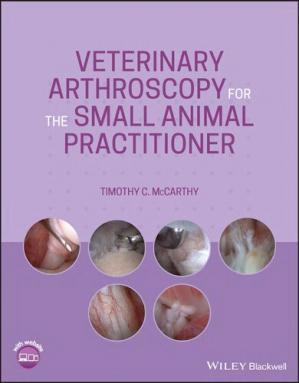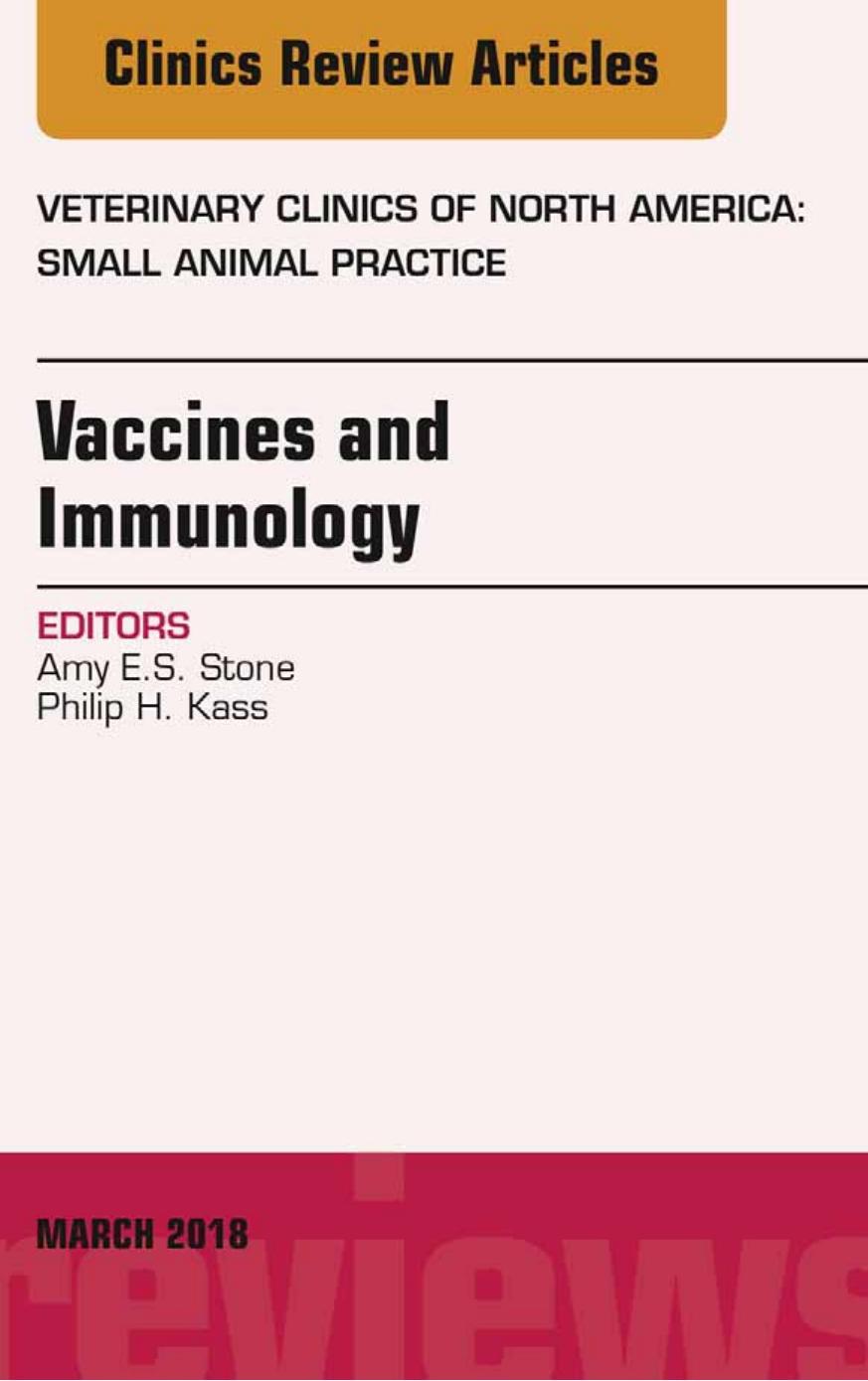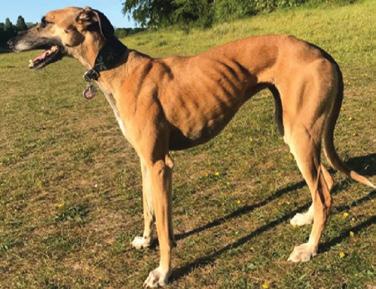Instant digital products (PDF, ePub, MOBI) ready for you
Download now and discover formats that fit your needs...
Veterinary Arthroscopy for the Small Animal Practitioner
Timothy C. Mccarthy
https://ebookmass.com/product/veterinary-arthroscopy-for-the-smallanimal-practitioner-timothy-c-mccarthy/
ebookmass.com
Veterinary Surgery: Small Animal Expert Consult E BOOK 2nd Edition, (Ebook PDF)
https://ebookmass.com/product/veterinary-surgery-small-animal-expertconsult-e-book-2nd-edition-ebook-pdf/
ebookmass.com
Vaccines and Immunology Stone
https://ebookmass.com/product/vaccines-and-immunology-stone/
ebookmass.com
Race, Racism and the Geography Curriculum John Morgan



https://ebookmass.com/product/race-racism-and-the-geographycurriculum-john-morgan/
ebookmass.com

https://ebookmass.com/product/an-extraordinary-lord-anna-harrington-3/

ebookmass.com
The Veterinary Nurse’s Practical Guide to Small Animal Anaesthesia
This edition first published 2023 © 2023 John Wiley & Sons Ltd
All rights reserved. No part of this publication may be reproduced, stored in a retrieval system, or transmitted, in any form or by any means, electronic, mechanical, photocopying, recording or otherwise, except as permitted by law. Advice on how to obtain permission to reuse material from this title is available at http://www.wiley.com/go/permissions.
The right of Niamh Clancy to be identified as the author of the editorial material in this work has been asserted in accordance with law.
Registered Offices
John Wiley & Sons, Inc., 111 River Street, Hoboken, NJ 07030, USA
John Wiley & Sons Ltd, The Atrium, Southern Gate, Chichester, West Sussex, PO19 8SQ, UK
For details of our global editorial offices, customer services, and more information about Wiley products visit us at www. wiley.com.
Trademarks: Wiley and the Wiley logo are trademarks or registered trademarks of John Wiley & Sons, Inc. and/or its affiliates in the United States and other countries and may not be used without written permission. All other trademarks are the property of their respective owners. John Wiley & Sons, Inc. is not associated with any product or vendor mentioned in this book.
Limit of Liability/Disclaimer of Warranty
The contents of this work are intended to further general scientific research, understanding, and discussion only and are not intended and should not be relied upon as recommending or promoting scientific method, diagnosis, or treatment by physicians for any particular patient. In view of ongoing research, equipment modifications, changes in governmental regulations, and the constant flow of information relating to the use of medicines, equipment, and devices, the reader is urged to review and evaluate the information provided in the package insert or instructions for each medicine, equipment, or device for, among other things, any changes in the instructions or indication of usage and for added warnings and precautions. While the publisher and authors have used their best efforts in preparing this work, they make no representations or warranties with respect to the accuracy or completeness of the contents of this work and specifically disclaim all warranties, including without limitation any implied warranties of merchantability or fitness for a particular purpose. No warranty may be created or extended by sales representatives, written sales materials or promotional statements for this work. This work is sold with the understanding that the publisher is not engaged in rendering professional services. The advice and strategies contained herein may not be suitable for your situation. You should consult with a specialist where appropriate. The fact that an organization, website, or product is referred to in this work as a citation and/or potential source of further information does not mean that the publisher and authors endorse the information or services the organization, website, or product may provide or recommendations it may make. Further, readers should be aware that websites listed in this work may have changed or disappeared between when this work was written and when it is read. Neither the publisher nor authors shall be liable for any loss of profit or any other commercial damages, including but not limited to special, incidental, consequential, or other damages.
Library of Congress Cataloging-in-Publication Data
Names: Clancy, Niamh, editor.
Title: The veterinary nurse’s practical guide to small animal anaesthesia / edited by Niamh Clancy.
Description: First edition. | Chichester, West Sussex ; Hoboken, NJ : Wiley-Blackwell, 2023. | Includes bibliographical references and index.
Identifiers: LCCN 2022049641 (print) | LCCN 2022049642 (ebook) | ISBN 9781119716921 (paperback) | ISBN 9781119716969 (adobe pdf) | ISBN 9781119717034 (epub)
Subjects: MESH: Anesthesia—veterinary | Anesthesia—nursing | Analgesics—standards | Dog Diseases—nursing | Cat Diseases—nursing | Animal Technicians—standards
Classification: LCC SF914 (print) | LCC SF914 (ebook) | NLM SF 914 | DDC 636.089/796 —dc23/eng/20221230
LC record available at https://lccn.loc.gov/2022049641
LC ebook record available at https://lccn.loc.gov/2022049642
Cover Images: © Ana Carina Costa, Carolina Palacios Jimenez, Niamh Clancy, Ioan Holban Cover design by Wiley
Set in 9.5/12.5pt STIXTwoText by Straive, Chennai, India
Contents
List of Contributors xv
Preface xvii
1 Pre-Anaesthetic Assessment and Premedication 1
Niamh Clancy
Patient Assessment 3
History 3
Physical Examination 4
Cardiac and Thoracic Auscultation 4
Body Condition Scoring (BCS) 6
Hydration 7
Patient Temperament 7
Other Considerations 7
Premedication 9
Administration of Premedication 15
Acknowledgements 17 References 17
2 Interpreting Blood Results 19
Joanna Williams Haematology 19
Red Blood Cell Count and Packed Cell Volume (RBC and PCV) 19
High PCV 19
Low PCV 20
White Blood Cell (WBC) and Neutrophil Count 20
High Count 20
Low Count 20
Lymphocytes and Monocytes 21
Eosinophils and Basophils 21
Platelets 21
High Count 21
Low Count 21
Biochemistry 23
Proteins (TP, ALB, GLOB) 24
3
High Levels (Hyperproteinaemia) 24
Low Levels (Hypoproteinaemia) 24
Hepatic Parameters (ALKP, ALT, BIL) 25
High Levels 25
Renal Parameters (CREA, BUN, InPHOS) 25
High Levels 25
Low Levels 26
Glucose (GLU) 26
High Levels (Hyperglycaemia) 26
Low Levels (Hypoglycaemia) 26
Electrolytes 26
Sodium (Na+) 26
High Levels 26
Low Levels 27
Potassium (K+) 27
High Levels 27
Low Levels 27
Calcium (Ca2+) 28
High Levels 28
Low Levels 28
Conclusion 29
References 29
Cardiovascular Physiology 31
Joanna Williams
Blood Flow Through the Heart 32
Conduction Through the Heart 33
Vascular System 34
Pulmonic Circulation 34
Systemic Circulation 35
Cardiac Output 36
Stroke Volume 36
Heart Rate 38
Anaesthetic Considerations for Patients with Cardiovascular Disease 39
References 41
4 Respiratory Physiology and Ventilation 42
Ioan Holbon
Respiratory Anatomy 42
Pulmonary Ventilation 43
Central Regulation of Respiration 44
Chemical Regulation of Respiration 44
Mechanics of Breathing 44
Inspiration 45
Expiration 45
6 Capnography and Spirometry 78
Lisa Angell
Capnography/Capnometry 78
Capnograph Device Options 79
Information Provided from a Capnograph 81
Carbon Dioxide 81
Interpretation of Carbon Dioxide Values 82
The Normal Capnogram 87
Analysis of the Capnogram 88
Common Abnormal Capnography Waveforms
and Their Interpretation 89
Spirometry 95
Acknowledgements 95
References 96
7 Pulse Oximetry 97
Ana Carina Costa
Introduction 97
How Does the Pulse Oximeter Work? 97
Data Interpretation 100
SpO2 and PaO2 100
Hypoxaemia 102
Plethysmograph 104
Anaemia and Abnormal Haemoglobin Forms 107
Anaemia 107
Methaemoglobin 108
Carboxyhaemoglobin 108
Tips and Tricks 108
Advanced Technology – Masimo Pulse Co- Oximetry 111
References 111
8 Practical ECGs 113
Courtney Scales
ECG Fundamentals 114
Normal Conduction 114
The ECG Machine 115
The ECG Cables 117
The ECG Complex 119
Common ECG Complexes and Rhythms 121
Sinus Rhythms 121
Normal Sinus Rhythm 122
Sinus Arrhythmia 122
Sinus Tachycardia 123
Sinus Bradycardia 124
Supraventricular Arrhythmias 124
Atrial Fibrillation 125
Second Degree Atrioventricular Block 125
Third Degree Atrioventricular Block 127
Sick Sinus Syndrome 128
Ectopic Ventricular Complexes 128
Ventricular Premature Complex 129
Ventricular Escape Complex 131
Ventricular Arrhythmias 131
Ventricular Tachycardia 132
Accelerated Idiopathic Ventricular Rhythm 132
Ventricular Fibrillation 133
References 138
9 Fluid Therapy 139
Niamh Clancy
Fluid Distribution and Composition 139
Movement of Fluid in the Body 141
Fluid Disturbances 142
Dehydration vs. Hypovolemia 143
Intravenous Fluid Therapy During the Peri-Anaesthetic Period 145
Fluid Selection 146
Crystalloids 146
Hartmann’s Solution/Compound Sodium Lactate 146
Lactated Ringer’s Solution 148
Normal Saline 148
5% Dextrose Solution 148
Hypertonic Saline 148
Colloids 149
Gelatines 149
Dextrans 150
Hydroxyethylstarches (HES) 150
Albumin 150
Whole Blood 150
Plasma (Fresh/Fresh Frozen/Stored) 151
Fluid Supplementation 151
Potassium 151
Sodium Bicarbonate 152
Calcium 152
Glucose 152
Fluid Delivery Systems 153
Giving Sets 153
Fluid Pumps and Syringe Drivers 155
References 157
10 Induction Agents 159
Ana Carina Costa
Stages of General Anaesthesia 159
Injectable Anaesthetics 160
Propofol 160
Pharmacokinetic Properties 160
Pharmacodynamic Properties 161
Tips and Tricks 161
Special Considerations 162
Alfaxalone 162
Pharmacokinetic Properties 163
Pharmacodynamic Properties 163
Tips and Tricks 163
Special Considerations 163
Propofol and Alfaxalone Total Intravenous Anaesthesia – TIVA 164
Special Considerations 164
Ketamine 166
Pharmacokinetic Properties 167
Pharmacodynamic Properties 167
Tips and Tricks 168
Special Considerations 168
Co-Induction 168
Special Considerations 169
Etomidate 170
Pharmacokinetic and Pharmacodynamic Properties 170
Special Considerations 171
Thiopental 171
Inhalational Anaesthesia Induction 171
Acknowledgements 172
References 173
11 Inhalant Anaesthetic Agents 175
Niamh Clancy
Pharmacokinetics of Inhalant Agents 175
Distribution 175
The Inspired Concentration of Inhalants 176
Blood: Gas Solubility 176
Ventilation 177
Elimination 177
Minimal Alveolar Concentration (MAC) 177
The Ideal Inhalant Agent 179
Physiological Effects of Inhalant Agents 180
Isoflurane 182
Sevoflurane 182
Desflurane 183
Vaporisers 183
Saturated Vapour Pressure 183
Desflurane 186
Position on the Back Bar 187
Key Fill Systems 187
Nitrous Oxide 190
Advantages and Clinical Uses 191
Disadvantages 191
Personal Safety 191
Monitoring of Exposure 192
Limiting of Exposure 192
References 192
12 Intubation 194
Carol Hoy
Placement of an ETT 195
Equipment 196
ETT or Similar Device 196
Laryngeal Masks 197
Armoured ETT 198
Securing the ETT 199
Laryngoscope 199
A Stylet 199
Lidocaine 200
Technique 202
Confirming Placement 204
Inflating the Cuff 205
Cleaning ETT 206
Alternative Intubation Techniques 206
Nasotracheal Intubation 206
Intubation Using a Pharyngotomy 207
Retrograde Intubation 207
One Lung Intubation 207
Tracheostomy 208
Troubleshooting 208
Brachycephalic Patients 209
Equipment for Difficult Intubation 209
How to Deal with an ETT that Is Difficult to Remove 210
Summary 210
References 210
13 The Anaesthetic Machine and Breathing Systems 212
Courtney Scales
Introduction 212
Gas Supply 212
Oxygen Cylinders 214
Nitrous Oxide Cylinders 214
Oxygen Concentrators 215
Cylinder Manifold 216
Liquid Oxygen 218
Pressure Gauges and Regulators 219
Alarms 220
Safety Features 220
The Anaesthetic Machine 225
Flowmeters 225
Back Bar 228
Common Gas Outlet 228
Oxygen Flush 229
Anaesthetic Machine Leak Test 229
Scavenging System 230
Active Scavenging System 231
Passive Scavenging System 232
Breathing Systems 234
Non-Rebreathing Systems 236
Fresh Gas Flow 237
Paediatric T-Piece 238
Bain 239
Lack 241
Rebreathing Systems 242
Circle Fresh Gas Flow Rates 244
Carbon Dioxide Absorbing 245
Hybrid System 247
Fresh Gas Flow 248
Breathing System Selection 248
Storage and Repeated Use of Breathing Systems 249
References 250
14 Anaesthesia Recovery 251
Courtney Scales
Introduction 251
Preparing to Recover 251
Handover to the Recovery Team 253
Monitoring in the Recovery Period 254
Delayed Recovery 254
Sedation in the Recovery Period 255
Pain Management 257
Airway Management and Hypoxaemia 257
Airway Obstruction 257
Hypoxaemia 260
Temperature Management 261
Hypothermia 262
Hyperthermia 263
Haemodynamic Instability 264
Coexisting Disease Considerations 265
Conclusion 267
References 268
15 Pain 269
Niamh Clancy and Claire Sneddon
The Pain Pathway 271
Transduction 271
Transmission 272
Modulation 272
Projection 273
Perception 273
Pain Management 273
Opioids 274
Ketamine 275
Lidocaine 275
Alpha-2-Adrenergic Agonists 275
Non-Steroidal Anti-Inflammatory Drugs (NSAIDs) 276
Other Analgesics 276
Nursing Care for the Painful Patient 277
Pain Assessment 279
Pain Scoring Systems 282
Validation 283
Application of Pain Scales 284
Pitfalls of Pain Scoring Systems 287
Acknowledgements 294
References 294
16 Local Anaesthetic Techniques 296
Lisa Angell
The Nervous System 296
Mechanism of Action 297
Performing Local Anaesthetic Techniques 299
Techniques for the Head 301
Techniques for the Upper Jaw and Nose 302
Maxillary Nerve Block 302
Infraorbital Nerve Block 303
Palatine Nerve Block 303
The Lower Jaw 303
The Mandibular Nerve Block 303
The Mental Nerve Block 303
Ocular Nerve Blocks 304
The Retrobulbar Block 304
Auricular Nerve Blocks 305
Techniques for the Forelimbs 306
Brachial Plexus Nerve Block 306
RUMM Block 307
Techniques for the Hindlimbs 308
The Epidural 308
Femoral, Sciatic, and Psoas Nerve Block 310
Bier’s Nerve Block 311
Digital Nerve Block 312
Thoracic Nerve Block 312
Intercostal Nerve Block 312
Techniques for Neutering 313
Testicular Block 313
Ovarian Pedicle 313
Other Techniques 314
The Erector Spinae Plane Nerve Block 314
Quadratus Lumborum Nerve Block 315
Local Anaesthesia for Post- Operative or Chronic Pain Conditions 315
Wound Soaker Catheters 315
Intrapleural Analgesia 316
Epidural Catheters 316
Nursing Care for Patients Following Local Anaesthetic Techniques 316
Acknowledgements 317
References 317
17 Constant Rate Infusions and Calculations 319
Niamh Clancy
What Are CRIs 319
Advantages of CRIs 320
Analgesia 321
Blood Pressure Regulation 322
Hypnosis 324
Administration 325
Calculations 327
Acknowledgements 331
References 331
18 Case Studies 333
Niamh Clancy
Brachycephalic Patients 333
Renal Disease 336
Hyperthyroidism 339
Diabetes Mellitus 341
Hepatic Disease 343
The Aggressive Patient 345
Paediatric Patient 347
Geriatric 350
Respiratory Patient 352
Caesarean Section 355
Gastric Dilation-Volvulus 357
Urethral Obstruction 359
Cardiac Disease 361
Acknowledgements 364
Index 365
List of Contributors
Ana Costa, PG Cert AVN, NCert Anaesth,
NCert Physio, RVN
Anaesthesia Department Queen Mother
Hospital for Animals
Royal Veterinary College
Hawkshead Lane
AL9 7TA
UK
Carol Hoy, VTS (Anaesthesia & Analgesia)
PgCert (VetEd)
Senior Nurse
Anaesthesia Department Queen Mother
Hospital for Animals
Royal Veterinary College
Hawkshead Lane
AL9 7TA
UK
Claire Sneddon, RVN
Senior Nurse
Anaesthesia Department Queen Mother
Hospital for Animals
Royal Veterinary College
Hawkshead Lane
AL9 7TA
UK
Courtney Scales, NCert Anaesth RVN
Clinical Educator
Burtons Medical Equipment Ltd.
Pattenden Lane
Marden
TN12 9QD
UK
Ioan Holban, BSc (Hons) RVN
Anaesthesia Department Queen Mother
Hospital for Animals
Royal Veterinary College
Hawkshead Lane
AL9 7TA
UK
Joanna Williams, BSc RVN
Eye Veterinary Clinic
Marlbrook
Leominster
HR6 0PH
USA
Leanne Smith, BSc (Hons)
PgCert (Veterinary
Anaesthesia & Analgesia) RVN
Royal Veterinary College
Hawkshead Lane
AL9 7TA
UK
Lisa Angell, VTS (Anaesthesia/Analgesia)
PgCert (VetEd) RVN
Head Nurse
Anaesthesia Department Queen Mother
Hospital for Animals
Royal Veterinary College
Hawkshead Lane
AL9 7TA
UK
List of Contributors
Niamh Clancy, Dip AVN (SA) HE Dip CVN
PgCert (VetEd) RVN
Teaching Fellow Centre for Veterinary Nursing
RVN Anaesthesia Department Queen Mother Hospital for Animals
Royal Veterinary College Hawkshead Lane AL9 7TA UK
Preface
The role of the veterinary nurse within the veterinary team has changed drastically since the infancy of the profession many years ago. With professional recognition in the United Kingdom (UK) came accountability for their conduct and the requirement to undertake continuing professional development. Every registered veterinary nurse (RVN) in the UK makes a declaration to ensure the health and welfare of animals committed to their care.
As veterinary nursing has developed over the years, so too has the discipline of veterinary anaesthesia. The use of safer anaesthetic protocols, availability of monitoring equipment and the changes in the education of veterinary nurses, have all contributed to a reduction in mortality and morbidity of patients. Anaesthesia has become a large portion of the veterinary nurse’s role in the veterinary practice. While some revel in undertaking the task, it can be daunting to many. The RVN’s role in anaesthesia, under the veterinary surgeon’s direction, is to act as the eyes and ears of the veterinary surgeon, reporting any changes that may occur and reacting appropriately. RVNs also play a pivotal role in the recovery stages of the peri-anaesthetic period and the pain assessment of patients under their care.
Despite the RVN’s role in veterinary anaesthesia, currently, there is no practical guide to anaesthesia directed solely at the veterinary nurse. Although veterinary anaesthesia textbooks do exist, they tend to focus strongly on pharmacology and are text-heavy which may be better suited to the veterinary student studying for exams. While there are veterinary anaesthesia textbooks directed at the RVN, these are currently dated. The goal of the veterinary nurse’s practical guide to small animal anaesthesia is to provide the RVN in practice with a quick reference book that can be utilised in an emergency, while also being in-depth enough that it can be used to research a topic. It is intended for both the experienced RVN, and those just starting their journey.
All involved in the production of this textbook are RVNs who share a passion for anaesthesia while having worked as specialist anaesthesia nurses at times during their careers. Many of the chapters provided have also been peer-reviewed by European and American board specialists in anaesthesia and analgesia. We hope that this guide will become a useful tool for the RVN in practice and that it will help with the provision of anaesthesia that is safe and reduces mortality and morbidity.
Pre-Anaesthetic Assessment and Premedication
Niamh Clancy
The benefits of good history taking and a thorough clinical examination prior to general anaesthesia cannot be disputed and are vital to the delivery of a safe anaesthetic. Issues found during the pre‐anaesthetic assessment may cause the Veterinary Surgeon (VS) in charge of the case to change their anaesthetic plan and allow the Registered Veterinary Nurse (RVN) to prepare for any eventuality. This chapter will outline how the RVN can perform a thorough clinical examination, assign American Society of Anesthesiologists (ASA) status to a patient and how some concurrent health issues and medications may affect the choice of anaesthetic medications used. This chapter also sets to outline the aims of premedication and the advantages and disadvantages of many commonly used agents. Although the risk of mortality in veterinary anaesthesia has decreased in recent years, it is still substantial with Brodbelt et al. (2008) stating that 1 in 2000 dogs and 1 in 850 cats will face mortality. Being aware of a patient’s co‐morbidities before administration of any medications could potentially reduce these numbers greatly.
Table 1.1 American Society of Anesthesiologists (ASA) scale for general anaesthesia.
ASA scale Physical description
1 Healthy – no disease present
2 Slight to mild systemic disease which is not limiting
Patient example
Healthy patient for castration
Patient with stable diabetes mellitus for cataract surgery
3 Moderate to severe systemic disease which limits normal function Uncontrolled diabetic patient or patient presenting with symptomatic heart disease
4 Very severe systemic disease that is a constant threat to life
5 Moribund and not expected to live over 24 hours without surgery
Patient with septic peritonitis for exploratory laparotomy
Patient for gastric dilation and volvulus correction surgery
E Emergency Depicts surgery is emergency
The Veterinary Nurse’s Practical Guide to Small Animal Anaesthesia, First Edition. Edited by Niamh Clancy.
© 2023 John Wiley & Sons Ltd. Published 2023 by John Wiley & Sons Ltd.
ASA Physical Status IV* A patient with severe systemic disease that is a constant threat to life
ASA Physical Status V* A moribund patient who
(7-9%)
• Endocrinopathy - uncontrolled/unstable Epilepsy - uncontrolled/unstable
Anaemia - severe (PCV: <20% dogs, <15% cats)
Brachycephalic with moderate/severe respiratory/ gastrointestinal signs
Cardiac arrhythmia - severe/uncontrolled Cardiac disease - decompensated
• Cardiac murmur - grade 4-6/6
• Dehydration - severe (≥10%)
• Diabetic Ketoacidosis (DKA) Dyspnoea Emaciation
Cardiac disease - advanced/decompensated
Disseminated intravascular coagulopathy (DIC) Endotoxemia - advanced/decompensated
• Gastric dilation and volvulus
• Hepatic disease - advanced/decompensated Intracranial
Gastrointestinal disease - uncontrolled/unstable
Hepatic disease - all but controlled/compensated
• Infection - moderate/severe/systemic (e.g. pyometra)
• Pulmonary disease - all but controlled/compensated
• Pyrexia
Renal disease - all but controlled/compensated Very young/Neonatal (<12 weeks) patient otherwise healthy
• Endotoxemia
• Epilepsy - Status epilepticus
• Hepatic disease - uncontrolled/unstable
Immune mediated disease (e.g. IMHA/IMTP)
Pulmonary disease - uncontrolled/unstable
Renal disease - uncontrolled/unstable
Shock - severe (e.g. hypovolaemic, haemorrhagic)
Systemic inflammatory response syndrome (SIRS)
• Uraemia
• Urinary obstruction
Multiple organ dysfunction (MODS)
Renal disease - advanced/decompensated
Severe trauma
Shock - advanced/decompensated (e.g. hypovolaemic, haemorrhagic)
Terminal malignancy/metastatic
Figure 1.1 Jurox’s veterinary specific ASA grading. Source: Courtesy of Daniel Cripwell, Alex Dugdale and Joanne Michou; Reproduced with permission from Jurox UK.
The ASA developed a classification system in 1963 which puts patients into five distinct levels of fitness for anaesthesia. A sixth was later developed, however, this is not relevant to veterinary patients. The scale should be used to identify at risks patients so that the anaesthetist can assess whether mortality or morbidity is likely. It can also help decide whether the patient needs stabilisation prior to anaesthesia. Patients who score three or greater are four times as likely to encounter peri‐anaesthetic complications (Posner 2007). Table 1.1 shows the ASA grading system used in human medicine.
It can be difficult to place some of our veterinary patients into these human boxes. Therefore, a veterinary specific anaesthesia scoring system has been developed by veterinary anaesthesia and analgesia specialists and Jurox (a veterinary drug company) which can be seen in Figure 1.1. The RVN in practice may find this more applicable to their patients.
Patient Assessment
A thorough patient examination should be undertaken before any patient undergoes general anaesthesia. A guide to completing a patient examination is detailed below, please remember that any abnormalities should be relayed to the VS in charge of the case.
History
Table 1.2 offers a guide of questions that should be asked to an owner and why they are vital.
Table 1.2 Showing questions to be asked at admission and what they can tell the nurse.
Questions to be asked upon admission
Has the patient had any exercise intolerance or fainting episodes?
Has there been and vomiting, diarrhoea, or regurgitation?
This can be an indication or respiratory or cardiovascular disorders.
Vomiting and diarrhoea can dictate whether the patient’s condition has worsened or if they are dehydrated and if non‐steroidal anti‐inflammatory drugs (NSAIDs) should be given. Regurgitation can lead to aspiration pneumonia.
How has the patient’s appetite been Can be a sign of worsening concurrent condition. May also be an indicator of pain.
Has the patient been as active as they normally are?
Has the patient been coughing or sneezing?
When did the patient last eat?
Has the patient been scratching more than normal or have any hair loss or wounds?
Can be a sign of lethargy or pain.
Can be a sign of upper or lower respiratory issues or infectious disease in both dogs and cats.
Different life stages and some breeds will need different fasting times. Paediatric patients will need sorter fasting times.
If pyoderma is noted in the surgical area field surgery may be postponed. Hair loss or scratching may be a sign of parasites.
(Continued)

Demonstrating the palpation of the dorsal pedal pulse.

The areas of the thorax which should be auscultated to perform a thorough respiratory examination.
Body Condition Scoring (BCS)
Many different body condition scoring (BCS) systems are available through numerous pet food wholesalers which can be used to help guide our assessment of the patient before anaesthesia. A decrease in BCS can increase the risk of hypothermia while the patient is anaesthetised which can prolong recovery and increase the risk of morbidity and mortality (Grimm 2015). An increase in BCS can lead to issues with catheter placement, the patient’s ability to breathe adequately while anaesthetised and issues with drug dosing and distribution.
